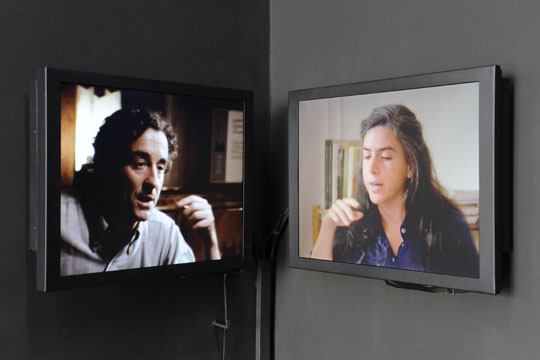Amie Siegel
Monday, 28 February 2011
Work from Black Moon.
“The centerpiece of this three-part work is “Black Moon,” a partial remaking of Louis Malle’s 1975 film of the same title. A present-day science-fiction without dialogue, Siegel’s “Black Moon” traverses multiple film tropes – action, guns, lonely campfires, the end of the world – and, like its band of armed female revolutionaries, resists taking up residence in a fixed genre or narrative. Set in the post-apocalyptic landscape of foreclosed housing developments in Florida and California, the houses and empty streets become protagonists of a silent narrative, a documentary of the recent past. A highly stylized troop of female soldiers wanders through the abandoned environments, pushed on by gunfire and the bloody aftermath of battles. “Black Moon” conjures references to wars ‘here and elsewhere,’ suggesting alternate endings to the mythical domestic return of US troops from campaigns abroad, pondering the places soldiers protect, and the parallel economies of gender, images, and warfare. The film’s deliberate pacing, juxtaposing scenes of the armed women with fixed camera tableaux and tracking shots of the empty architecture of financial speculation, ponders the uncannily recent ruins of a future that never was.
The second element is a series of photographs, “Black Moon / Hole Punches”, derived from the hole punches, or black moons, typically cut by the motion picture laboratory into the first frame of action in film negative. Always left out of the final edited film, these hole punches appear in Siegel’s prints as imperfect black disks or voids cut out of film frames. They are evocative of lunar phases, yet strangely violent in their intercession into the otherwise smooth picture plane. As metaphors of the filmic endeavor itself, the set of images expose the film’s own production in a fragmentary manner, while re-capitulating its latent violence and re-use of aesthetic ruins.
The third element is “Black Moon / Mirrored Malle,” a 2-channel video installation that places an original 1975 interview with Louis Malle about his film “Black Moon” against a shot-for-shot version in which the artist herself plays Malle. This shift of roles introduces a transposition of gender and language, enacting a battle of authorship and doubled future within the present.” – Amie Siegel




